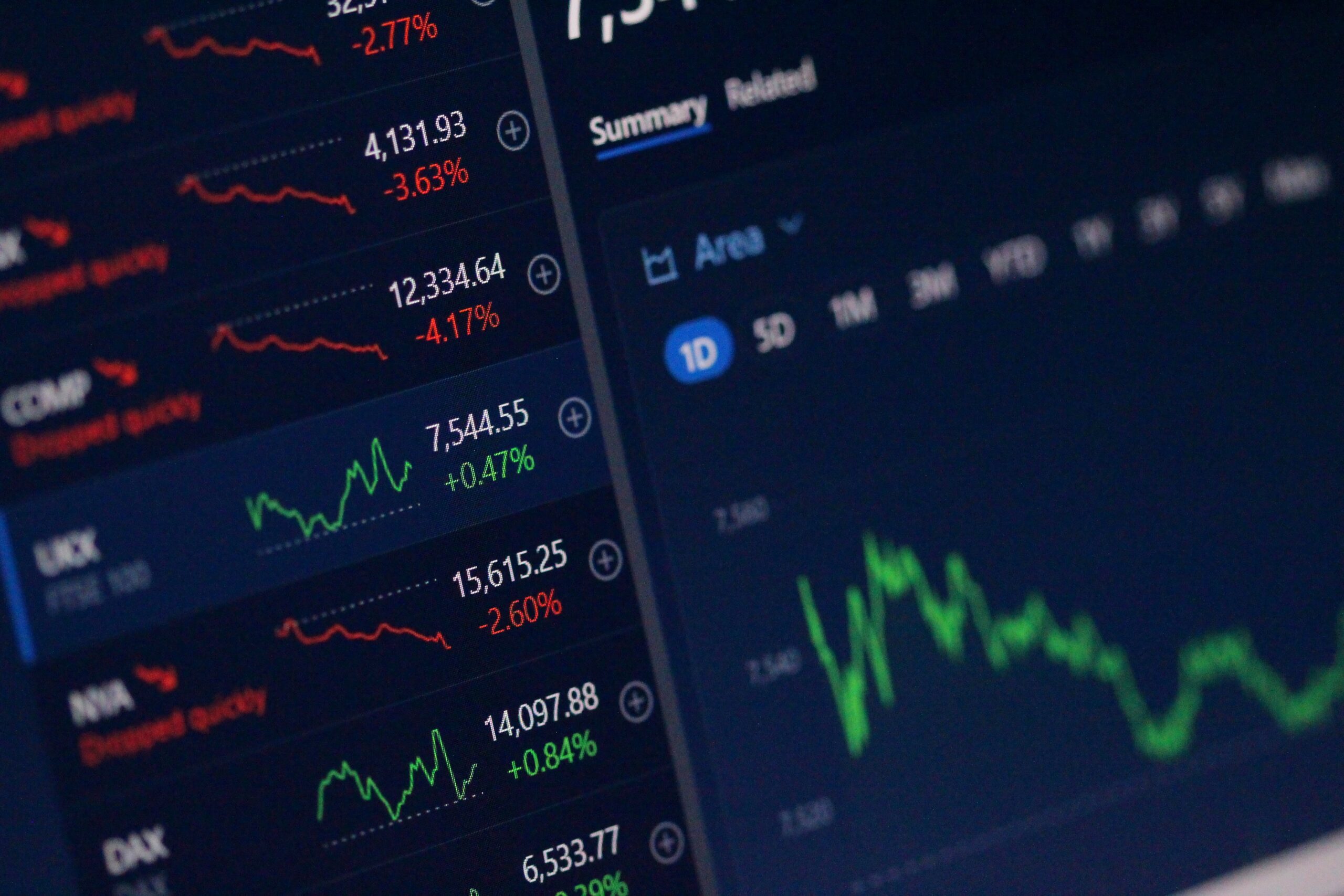- Revolutionary Prediction of Market Trends, Sales, and Consumer Behaviors
- Understanding AI-Powered Forecasting
- The Practical Applications of AI in Sales
- Impacting Sales and Marketing Strategies
- Boosting Operational Efficiency and Growth
- Assessing and Mitigating Challenges
Revolutionary Prediction of Market Trends, Sales, and Consumer Behaviors
Artificial intelligence (AI) is a game-changer in predicting market trends, sales targets, performance metrics, and customer behavior. To drive your business forward with greater confidence, you can use AI and predictive analytics to make informed decisions.
With AI-powered forecasting, patterns can be analyzed, correlations identified, and future outcomes can be accurately forecasted. As these predictive models continuously learn from new data, their predictions become increasingly accurate. You can make better business decisions by understanding emerging trends, anticipating fluctuations in demand, and optimizing business strategies.
You can gain a competitive advantage in decision-making, resource allocation, and overall efficiency by integrating AI and predictive analytics into your business. You can navigate the complexities of an ever-evolving business landscape successfully with the ability to respond proactively to market changes and identify trends and customer needs.
Understanding AI-Powered Forecasting
Fundamentals of Predictive Analytics
In predictive analytics, historical data is analyzed to gain insights into complex buying behavior and to predict future events that influence consumer behavior using a combination of advanced algorithms, patterns, and historical data. Your business can make better informed, data-driven decisions by utilizing these insights. AI-powered forecasting combines AI algorithms and machine learning models to predict future trends, sales performance, and customer behavior.
Machine Learning in Forecasting
Within large datasets, machine learning models identify patterns and relationships. Models are able to make more accurate predictions as the amount of data increases. When applied to forecasting your sales professionals’ product or service itself, machine learning can help your business:

Identify customer purchasing habits and preferences
Discover underlying factors that drive sales
Optimize inventory levels and resource allocation
Analyze market dynamics and competitive forces
By incorporating machine learning models into your sales rep forecasting processes, you can better understand and anticipate the changing needs of your customers and adapt your sales strategies accordingly.
AI Algorithms and Data Patterns
AI algorithms’ intense learning can process vast amounts of data and uncover hidden patterns. These algorithms learn from the data over time, continuously refining their predictions and adjusting as market conditions evolve. Some typical applications of AI algorithms in forecasting include:
Time series analysis: Forecasting based on historical data, such as sales numbers or market trends, to predict future patterns
Sentiment analysis: Analyzing social media data, reviews, and comments to gauge customer sentiment and inform marketing strategies
Demand forecasting: Estimating customer demand for products and services by considering factors such as seasonality, pricing, and market trends
In conclusion, AI-powered sales cycle forecasting offers businesses the tools to make smarter, data-driven decisions that improve overall performance. By leveraging advanced algorithms and machine learning models, you can unlock valuable insights into customer behavior, market trends, and sales performance, allowing you to optimize your strategies, measure sales performance, and stay ahead of the competition.
The Practical Applications of AI in Sales

Optimizing Sales Performance
AI-powered sales tools can significantly improve sales performance. AI algorithms can predict future sales trends by analyzing historical and current data on various parameters, tracking sales performance, and prescribing action plans accordingly. This helps sales teams focus on high-priority leads, optimize their sales efforts, and increase overall performance.
Sales Automation: Streamlining repetitive and time-consuming tasks that would otherwise burden sales representatives. Automation allows your sales team to focus on more critical tasks like prospect engagement and deal conversion.
Lead Scoring: AI-based scoring models can accurately rank leads in terms of their conversion likelihood. This enables you to prioritize leads with higher potential conversion rates, thus enhancing overall sales effectiveness.
Enhancing Sales Teams’ Decision-Making
Leveraging AI for decision-making enables sales teams to make data-driven choices that support their objectives. Below are some ways you and your sales managers and reps can employ AI for better decision-making:
Predictive Analytics: Utilizing AI for predictive analytics helps you to identify potential revenue opportunities, growth areas, and possible risks.
Quota Setting: AI-driven sales forecasting can set more accurate quotas, allowing your sales team to target reachable yet challenging goals, thereby improving performance metrics.
AI-Powered Suggestions: Rely on AI-driven insights and recommendations based on historical and current performance data to guide your sales team’s decision-making process, providing a competitive advantage.
AI Sales Forecasting and CRM Integration
Integrating AI-powered sales forecasting with your existing Customer Relationship Management (CRM) system adds immense value to your sales process and processes:
Data Quality Assessment: Before integrating AI into your sales forecasting and CRM, it’s crucial to make sure your data is clean and accurate. Doing so ensures proper fuel for the AI algorithms.
Salesforce and HubSpot: CRM tools like Salesforce and HubSpot work seamlessly with AI-powered forecasting solutions, enabling sales teams to track win probabilities, detect risk levels, monitor pipeline health and project revenue.
Streamline Sales Engagement: Utilizing AI-driven insights helps optimize the engagement process between your sales team and potential clients, ultimately leading to better conversion rates and overall sales performance.
By understanding consumer and habitual buying behavior and focusing on these practical applications, you can harness the power of AI to revolutionize your sales teams’ strategies, decision-making, and performance, setting them up for success in an increasingly competitive landscape.
Impacting Sales and Marketing Strategies
Incorporating Market Trends and Industry Data
AI-driven forecasting tools help you make informed decisions on the most current market trends and useful industry data. Social media, financial reports, consumer behavior, and purchasing patterns can all be analyzed using these tools to gain a deeper understanding of the market dynamics that are continually changing. Stay aware of seasonal trends, emerging technologies, and economic indicators influencing product demand and business performance. Ensure you optimize your marketing strategies effectively to connect with the right target audience.
Customer Behavior and Personalization
Using AI forecasting allows for a deeper understanding of customer behavior. AI-powered systems can predict your existing customers’ preferences and interests by analyzing historical purchase data, social media activity, and other data sources. This knowledge enables you to create personalized and tailored marketing campaigns that resonate with them—implementing dynamic audience targeting and segmentation aids in attracting high-value leads. Embrace these tools to enhance customer experiences, drive growth, and improve productivity in your sales and marketing efforts.
Pricing and Promotional Optimization
Confidently set pricing strategies and promotional campaigns based on AI-powered sales forecasting. By examining previous sales data, customer responses to promotions, and competitor pricing, AI can provide price elasticity insights and suggest optimal price points for your products or services. In addition, you will better understand the most effective marketing strategies, promotional channels, and timeframes for campaigns, ensuring the highest possible impact on your customer lifetime sales performance.
AI-powered forecasting fosters sales and marketing strategies by providing actionable insights on market trends, customer and consumer buying behavior, driving sales performance, and pricing optimization. Embracing these techniques paves the way for smarter and more data-driven decision-making in your organization.
Boosting Operational Efficiency and Growth
Automation and Time Savings
You can automate several time-consuming tasks by implementing AI-powered forecasting in your business. Various industries, such as telecommunications and healthcare, have found that AI forecasting engines can automate up to 50% of workforce management tasks. This automation leads to significant time savings, allowing your employees to focus on more strategic and higher-value activities.
Forecast Accuracy and Resource Allocation
Improving forecast accuracy is crucial for efficient resource allocation. By leveraging the power of AI, your business can better predict future trends and outcomes. With a more accurate forecast, you can allocate resources more effectively, leading to cost reductions and optimized decision-making. This, in turn, with sales performance data, helps drive your business’s growth and overall efficiency.
Supply Chain Management and Inventory Optimization
AI-driven forecasting is also vital in supply chain management and inventory optimization. By analyzing large volumes of data, AI tools can help you:
Optimize inventory levels: By predicting demand, you can ensure you have the right amount of inventory available, avoiding stockouts and excess inventory.
Improve delivery times: With better forecasts, you can plan and ensure your products reach the right destination on time, increasing customer satisfaction.
Reduce supply chain risks: AI makes identifying potential risks and vulnerabilities in your supply chain easier, allowing you to address them proactively.
In summary, AI-powered forecasting can significantly boost your business’s operational efficiency and measure performance and growth. By automating time-consuming tasks, improving sales metrics and forecast accuracy, and optimizing supply chain management and inventory, your business can gain the competitive edge needed in today’s fast-paced market.
Assessing and Mitigating Challenges
Data Quality and Governance
One of the primary challenges in AI-powered forecasting is ensuring the quality and governance of data. You must be mindful of gathering accurate, relevant, and up-to-date data to empower your predictions. Implementing best practices in data management and establishing robust governance structures to analyze data will help mitigate risks associated with low-quality data.
Quality: Monitor your data sources for integrity, consistency, and validity to reduce prediction errors due to inaccurate or outdated data.
Governance: Develop and enforce data collection, storage, and usage policies to maintain security while ensuring your models comply with regulatory standards.
Ethical Considerations and Data Security
As AI becomes more prominent in forecasting, ethical considerations and data security must be addressed. You should be aware of potential biases in your datasets and adopt a proactive approach to reduce potential harm.
Ethics: Analyze your data for potential biases that could adversely affect certain groups or lead to biased decision-making. Implement fairness-aware and transparent algorithms to improve the ethical outcomes of your predictions.
Security: Protect your customers’ privacy by implementing stringent data security measures, such as encryption and access controls, to maintain their trust.
Adapting to Emerging Trends and Technologies
Staying ahead of the curve in a rapidly evolving field like AI requires adaptability and constant learning. You should be prepared to adjust your forecasts in response to significant events, such as the COVID-19 pandemic, and to leverage new AI technologies, such as Generative AI, to enhance your predictions.
Real-time data: Incorporate real-time data feeds that capture sudden market or consumer behavior changes to ensure your forecasts remain responsive and relevant.
Emerging technologies: Stay informed about advancements in AI research and development, and be open to implementing new techniques or tools that can improve your forecasting accuracy.
By addressing these challenges and embracing best practices, you can confidently leverage AI-powered forecasting to predict future market trends, sales performance, and customer behavior, ultimately leading to better decision-making, customer retention, and a more prosperous future for satisfied customers and your business.
